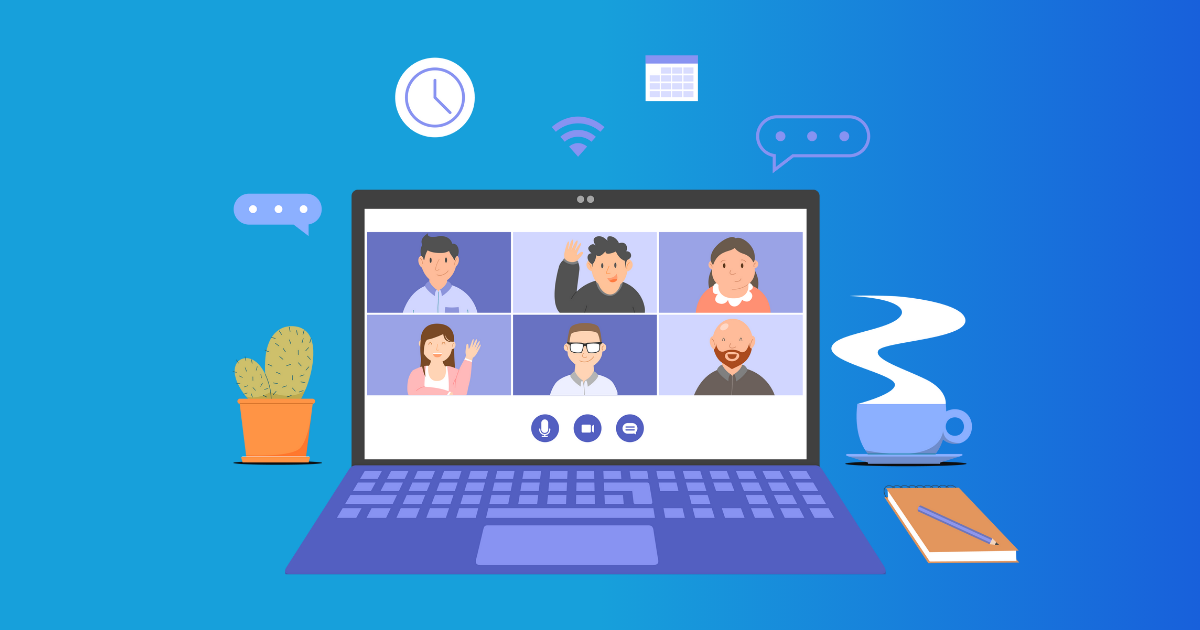Table of Contents
- Understanding Jitsi: A Quick Overview
- Jitsi Desktop vs Jitsi Meet: What’s the Core Difference?
- Jitsi Meet – Simple, Browser-Based Video Meetings
- Jitsi Desktop – Dedicated Messaging and VoIP App
- Practical Use Cases: Which Jitsi Client Should You Choose?
- Use Case 1: Remote Team Meetings and Online Classes (Jitsi Meet)
- Use Case 2: Advanced VoIP and Messaging for Teams (Jitsi Desktop)
- Use Case 3: Privacy-Conscious Users
- A Detailed Comparison: Features, Security, and Performance
- Step-by-Step: How to Start Using Jitsi Meet
- Mobile Apps for Jitsi Meet
- Step-by-Step: Getting Started with Jitsi Desktop
- Real-World User Insights
- Security & Privacy Considerations
- Final Thoughts on Jitsi Clients Comparison
- Conclusion
Figuring out whether to go with Jitsi Meet or Jitsi Desktop? You’re not navigating this alone. Both these tools belong to the Jitsi family, yet they bring distinct features to the table. This article breaks down their unique characteristics, strengths, and limitations, so you can choose the one that suits you best. Whether you’re after a simple browser video call or a more robust desktop app for VoIP and chatting, I’ve got you covered, with a straightforward, step-by-step guide.
Understanding Jitsi: A Quick Overview
Before we jump into comparing Jitsi Meet and Jitsi Desktop, let’s kick things off with a quick rundown of what Jitsi is all about.
Jitsi’s an open-source project dedicated to providing secure communication tools—think video calls, voice chats, and messaging apps. It launched with the ambitious aim of making free and secure VoIP and video solutions accessible everywhere. Today, Jitsi boasts several clients, with Jitsi Meet and Jitsi Desktop standing out as some of the most popular options.
- Jitsi Meet: This is a web-based video conferencing platform that runs smoothly on most modern browsers without needing any software installation. It covers group video calls, screen sharing, recording, chatting, and streaming to YouTube too.
- Jitsi Desktop: A standalone app you install on your computer (yep, that includes Windows, macOS, and Linux). It’s mainly set up for voice calls, video calls, and instant messaging via the XMPP/Jabber protocol.
Now, let’s dig into how these two differ and figure out when it makes sense to use each one.
Jitsi Desktop vs Jitsi Meet: What’s the Core Difference?
Jitsi Meet – Simple, Browser-Based Video Meetings
Jitsi Meet lets you kick off video calls right from your web browser. Open it up, hit meet.jit.si or your own self-hosted Jitsi Meet server, and you’re good to start or join a video meeting. It works across all desktop and mobile browsers, plus there are dedicated Android and iOS apps.
Key features:
- No need for desktop users to install anything
- Crystal clear group video and audio calls
- Options for screen sharing, chatting, and recording
- Rooms with passwords and moderation capabilities
- Handles up to 75 users in calls; for an optimal experience, aim for no more than 35
- Seamlessly integrates with calendar apps and third-party tools
- It’s open source and gets regular updates with snazzy new features and security patches
Jitsi Meet’s all about removing the hassle from video conferencing, whether you’re a casual user or handling remote meetings for your business. Being browser-based means no one has to keep installing or updating the software.
Jitsi Desktop – Dedicated Messaging and VoIP App
Jitsi Desktop is more of a traditional app you download and install. It’s not so much for one-off video meetings but tailored for ongoing comms involving messaging, voice, and video calls.
Its bread and butter is connecting to XMPP servers (not something Jitsi Meet uses). This allows for encrypted instant messaging, group chats, and VoIP calls with some solid call control features. The desktop client also supports SIP for hooking up with telephone systems.
Key features:
- Connects with XMPP (Jabber) for messages and calls
- Handles multiple accounts across various chat protocols
- Secure voice and video calls over VoIP
- File transfer and chat history enabled
- Super flexible, especially if you need protocol support outside standard video calls
- Needs installation and regular updates
Jitsi Desktop is crafted for those power users who need a comprehensive communication client.
Practical Use Cases: Which Jitsi Client Should You Choose?
Let’s break down some scenarios to help you decide when to use Jitsi Meet or Jitsi Desktop.
Use Case 1: Remote Team Meetings and Online Classes (Jitsi Meet)
If you need a no-fuss, reliable video meeting setup, Jitsi Meet is the way to go. Think small businesses doing daily remote standups or teachers conducting online classes. Simply share one link, and participants can jump in through their browser without any setup drama.
With features like recording and screen sharing, meetings can be stored or spiced up with presentations. The room moderation controls minimize disruptions—perfect for group settings.
Use Case 2: Advanced VoIP and Messaging for Teams (Jitsi Desktop)
For folks or organizations that require a full communication suite beyond just video calls, Jitsi Desktop might be the better fit. Say a company already runs an XMPP server or employees need SIP telephony—it’s all manageable in one client.
Open source lovers or tech developers can use it for integrating with XMPP-based tools or coordinating secure chat rooms with voice calls.
Use Case 3: Privacy-Conscious Users
Both clients emphasize security; Jitsi Meet has recently added end-to-end encryption (E2EE) for video calls to enhance privacy on meet.jit.si or self-hosted setups.
Jitsi Desktop supports secure protocols, but you might need a bit of tech-savviness to get it configured just right.
A Detailed Comparison: Features, Security, and Performance
| Aspect | Jitsi Meet | Jitsi Desktop |
|---|---|---|
| Platform | Browser-based (also mobile apps) | Desktop application (Windows/macOS/Linux) |
| Installation | Not Necessary (browser-based) | Required (download and install) |
| Primary Protocols | WebRTC | XMPP/Jabber, SIP |
| Use Case Focus | Video conferencing and webinars | VoIP, messaging, and multi-protocol instant messaging |
| User Experience | Straightforward and accessible for beginners | Tailored for tech users |
| Group Calls | Large group calls (up to 75 participants) supported | Supports calls but isn’t optimized for big group conferences |
| Screen Sharing | Fully supported | Limited or none |
| Recording | Available (to cloud or local) | Not available |
| Encryption | End-to-end encryption (E2EE) supported | Secure messaging and calls with XMPP protocols |
| Updates & Maintenance | Frequently updated with new features | Less frequent updates, mainly community-driven |
| Integration & Extensibility | Syncs with calendars and web services | Compatible with multiple chat protocols and SIP telephony |
Step-by-Step: How to Start Using Jitsi Meet
- Fire up your browser (Chrome, Firefox, Edge—your choice).
- Head over to https://meet.jit.si.
- Type in a unique meeting name or use the suggested one.
- Hit Go to create your meeting space.
- Share that meeting link with your buddies or colleagues.
- Mute, unmute, start screen sharing, or chat using the control bar at the bottom.
- Lock and secure your meeting with a password under the security tab to keep unwanted guests out.
- To start recording a meeting, head to “More actions” and select Start Recording.
Mobile Apps for Jitsi Meet
Grab the official Jitsi Meet app from the Google Play Store or Apple App Store for a full mobile vibe. It mirrors the desktop experience but with touch-friendly features.
Step-by-Step: Getting Started with Jitsi Desktop
- Download Jitsi Desktop from the Jitsi.org downloads page.
- Follow your OS instructions to install the app.
- Open Jitsi Desktop, then pick “Add new account.”
- Choose your protocol (XMPP, SIP, etc.) and fill in your server and account details.
- Connect to your chosen chat server.
- Start placing calls or sending messages to your contacts.
- Dive into the settings menu to tweak preferences, codecs, and security options.
With its support for multiple protocols, Jitsi Desktop offers broad communication capabilities.
Real-World User Insights
- A remote team I work with swears by Jitsi Meet for its effortless joining process and no need for app installations. Recording meetings and sharing screens have really amped up their collaboration.
- One of my more tech-savvy clients enjoyed setting up Jitsi Desktop for their XMPP server integration, enhancing their internal company IM platform with legacy systems. They found the flexibility indispensable, though the server configuration took some getting used to.
- In terms of privacy, they all appreciated steering clear from big commercial platforms, cutting down the risk of data harvesting.
Security & Privacy Considerations
Security is a non-negotiable for any communication tool. By default, Jitsi Meet uses WebRTC encryption. With the new end-to-end encryption, meetings can be even more secure. Hosting your own Jitsi Meet server gives you total control over who gets access and where the data goes.
Jitsi Desktop ups the security game with encrypted messaging via XMPP standards. Just keep in mind that trusting and properly maintaining your XMPP/SIP servers is crucial.
Stay on top of updates for your chosen client to ensure any security patches are implemented—Jitsi Meet tends to roll out updates more frequently than Jitsi Desktop.
Final Thoughts on Jitsi Clients Comparison
Choosing between Jitsi Desktop vs Jitsi Meet really boils down to your communication goals:
- Go for Jitsi Meet if you need instant, accessible video meetings that don’t require downloads or installations.
- Opt for Jitsi Desktop if you’re after a comprehensive desktop client with messaging and VoIP features through XMPP or SIP.
Both options are open source and put a premium on privacy. You can experiment with both and see which one slides naturally into your workflow. Luckily, the Jitsi community and official documentation have your back whether you’re just starting or are an advanced user.
Conclusion
Jitsi Meet and Jitsi Desktop perform unique roles within the Jitsi universe. When it comes to quick online video meetings that effortlessly work in your browser, Jitsi Meet is the star. For those who want a powerful desktop app covering messaging, voice calls, and multiple chat protocols, Jitsi Desktop is your go-to.
Understanding these differences ensures you choose the right tool to meet your communication goals securely and efficiently. As an avid Jitsi fan, I suggest starting with Jitsi Meet for its seamless calls and diving into Jitsi Desktop should your needs grow towards a complete communication app.
If you’re ready to jump in, head over to meet.jit.si or download Jitsi Desktop from the official site to discover its features firsthand.
So, are you all set to dive into Jitsi for your next meeting or team chat? Kick things off with Jitsi Meet’s browser-based calls, or download Jitsi Desktop for unbreakable messaging and voice calls, tailored to your workflow. Both tools are free, open source, and constantly improved by a worldwide community dedicated to secure communication. Give them a whirl and see what clicks for you!
Questions or need some setup tips for Jitsi clients? Reach out or explore the official Jitsi documentation.
FAQ
Jitsi Meet is a web-based video conferencing app for browsers and mobile devices, while Jitsi Desktop is a standalone desktop application focused on VoIP and messaging using the XMPP protocol.
Yes, Jitsi Meet runs entirely in your web browser, so you don’t have to install any software to start video calls.
Jitsi Meet provides a richer and more modern video conferencing experience with features like screen sharing, recording, and guest access compared to Jitsi Desktop.
Jitsi Desktop receives less frequent updates compared to Jitsi Meet, as the community mainly focuses on the Meet client for modern communication needs.
Both clients support end-to-end encryption and comply with privacy standards, but Jitsi Meet is more actively maintained with updated security features suitable for business.


